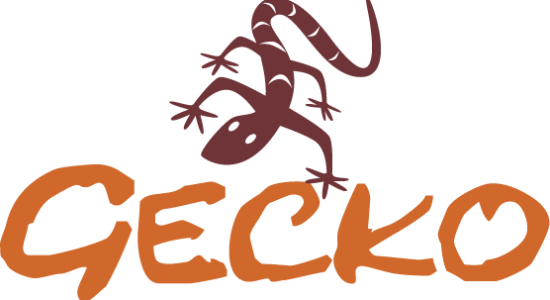
- info@gecko-adventure.com
- +255 784 991 576

Destination
+255 784 991 576
Fill Out The Online Enquire Form
Enter a Time For Us to Call You

ABOUT NYERERE NATIONAL PARK
The Nyerere National Park (formerly Selous Game Reserve) which is located in the southern part of Tanzania is the largest game reserve on the African continent, as well as one of the best place to see all the African wildlife. The quiet reserve offers a number of different wildlife habitats most of which are pristine offering an amazing opportunity to explore unspoilt Africa.
The lakes and rivers within the reserve are the main source of survival for the wildlife that lives here such as the large number of lions, wild dogs, crocodiles, elephants, hippos and buffaloes. To be honest the number of wildlife living here remains unknown due to the large size of the park, a thing that has attracted several tourists here during their Safari in Tanzania.
The Selous game reserve covered a total area of about fifty thousand (50,000) square kilometres, making it larger than a number of countries like Switzerland and Denmark. It covers about five percent (5%) of Tanzania’s land area which makes it three (3) times larger than the popular Serengeti National Park found in Northern Tanzania. Nyerere National Park was gazetted as a national park and has an area of 30,893 km², leaving the other smaller fraction remaining as the Selous Game Reserve which remained as the hunting blocks, set aside for hunting safaris in Tanzania. We at Safari Desire do not involve ourselves with hunting but only deal with Photographic safaris in Nyerere National Park, and Tanzania at large. Contact us to book your safari to Nyerere National Park.
Wildlife in Nyerere National Park
Despite the fact that the Selous is located within the isolated southern part of Tanzania, taking a safari here will reward you with very memorable game viewing experiences, as it supports very large numbers of animals including: half Tanzania’s total elephant population (about 30,000 of them), approximately 200, 000 buffaloes and nearly 80,000 wildebeests, vervet monkeys, giraffes, impalas, colobus monkeys, sable, hartebeests, elands, kudus, and baboons. It is also home to the largest population of the African wild dogs, a species that is highly in danger-of-extinction.
Selous Game Reserve can be toured in both longer safari tours that include a visit to other parks like Ruaha National Park and the Mikumi National Park, or our 3 days short safari in Selous Game Reserve. We cannot fail to talk about the successful ongoing project to revive the population of black rhinos living within this reserve which during the 1970s and 1980s were severely poached to nearly total extinction. Today, these can be seen during your Safari in the Selous.
The Selous game Reserve is also home to a large number of beautiful bird species thanks to its good network of water resources such River Rufiji, the oxbow lakes, the streams and lagoons all of which provide a diverse habitat to the birds. It is one of the best places to enjoy a Tanzania Bird Watching Safari, with more than 450 different species of birds that have been recorded. Some of the commonly seen bird species include: the fish eagle, Dickinson’s Kestrels, the Egyptian geese,
Selous Accommodation | Where to Stay
There are a number of different accommodation facilities within the park that can cater to all visitors irrespective of your safari budget as they include the expensive luxury lodges, the mid-range price lodges as well as the budget lodges.
Some of our recommended facilities include: Selous River Camp, Nyerere Tented Camp, Beho Beho, Roho ya Selous, Sand Rivers Lodge, Selous Serena Camp, Mivumo River Lodge, Siwandu lodge (previous called the Selous Safari Camp)Rufiji River Camp, Maji Moto, Lake Manze tented camp as well as Impala camp a sister camp to Manze.
Best time to visit Selous Game Reserve | When to go
The best time to explore the reserve is during the dry season from July, August, September and October when there are large numbers of animals congregating around the water sources. However I Should point out that this reserve can be visited all year round as the game viewing is very rewarding in a number of areas.
Bird watching is most rewarding in January and February although at this time most of the animals move to the more fertile areas within the reserve so when picking your accommodation at this time of the year, you should do it carefully.
You can tour Selous Game Reserve in combination to coser parks like Mikumi National Park and hiking in the Udzungwa Mountains National Park.
Selous Game Reserve Activities | What to do
There are a number of exciting activities to engage in while on Safari in Tanzania, and these include:
Get in touch with our safari experts who will advise you how best to customise your safari in the Selous Game Reserve.

TANZANIA'S TOP WILDLIFE AREA
Learn about Tanzania’s history, wildlife, and conservation on our Tanzania Destinations page … Greatest concentrations of wild animals, Tanzania is duly famed as a top … the region is incredibly rich in wildlife, though specific experiences. Explore with Gecko Adventure today!

TOP TANZANIA TRAVEL GUIDE
CONTACT US
P.O.Box 19131, Dar Es Salaam, Tanzania
info@gecko-adventure.com
+255 784 991 576
www.gecko-adventure.com
P.O.Box 19131, Dar Es Salaam, Tanzania
info@gecko-adventure.com
+255 784 991 576
www.gecko-adventure.com




Get latest news, safaris, offers & much more Subscribe below